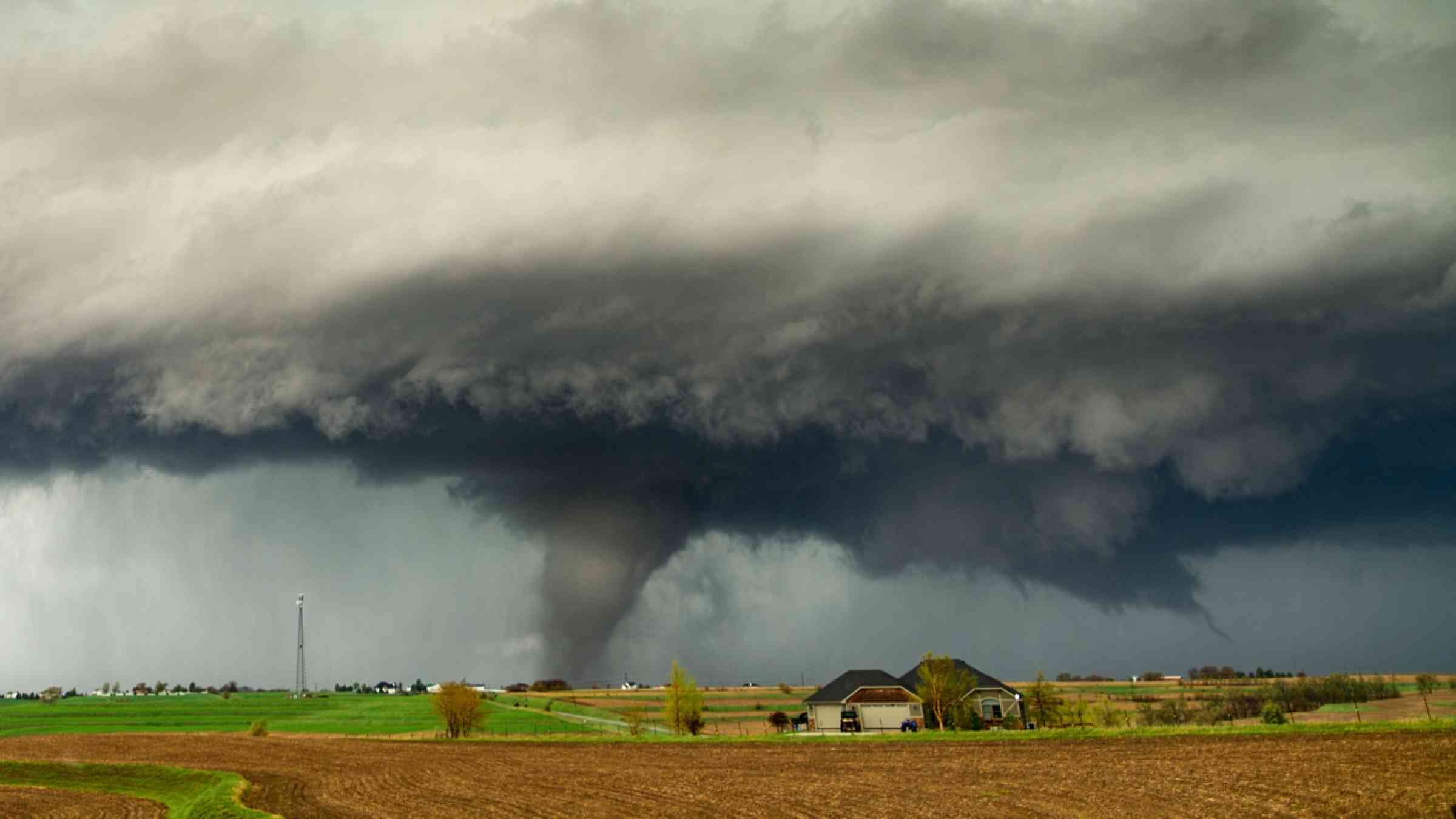The surprising factor making the United States a tornado hot spot

Tornado near Minden, Iowa, 26 April 2024
Central North America witnesses more tornadoes than anywhere else on Earth. Each year, 10 times as many twisters barrel through the United States compared with Canada, which is second on the list.
Geography can explain the liveliness of the United States' "tornado alley." Dry winds deflected by the Rocky Mountains and the warm, moist air coming from the Gulf of Mexico and the Caribbean Sea set the stage for tornado genesis. However, central South America also has similar conditions, with dry air from the Andes meeting moist air from the Amazon basin. So why aren't the flatlands of Bolivia, Argentina, and Paraguay tornado hot spots?
A new study reveals another key geographic factor: the terrain hundreds of kilometers upwind from where a tornado forms. The authors of the study, published in the Proceedings of the National Academy of Sciences of the United States of America, found that central North America's high tornado potential is partly due to the smooth, flat expanse of the Gulf of Mexico and the Caribbean Sea from where easterly winds flow toward the Great Plains.
"Wind shear determines if the air can spin to potentially form a tornado."
In contrast, South America's tropical region, covered by the Amazon rainforest and hills, is rough. It weakens the winds and suppresses wind shear-the change in wind speed or direction over a relatively short height above the surface. "Wind shear determines if the air can spin to potentially form a tornado," explained Funing Li, currently a postdoctoral researcher at the Massachusetts Institute of Technology and the study's first author. "Between these two continents, the near-surface wind shear is different due to the contrast in the upstream surface roughness."
To arrive at their results, Li and his colleagues used a global climate model that relied on historical data to simulate the interaction between the land and the atmosphere. They tweaked the surface roughness of tropical South America to resemble a flat, ocean-like mass and found that tornado potential increased significantly downwind. Similarly, tornado potential decreased in central North America when the group replaced the Gulf and the Caribbean with forests. The model's resolution wasn't high enough to reproduce individual tornadoes, but it simulated the large-scale environments-wind shear and other instabilities-that indicate tornado potential.
They also ran the tests on a simulated planet covered by ocean, adding a landmass similar to North America and a north-south mountain range. In line with their hypothesis, a smooth tropical surface produced a region with high tornado potential east of the mountains, whereas a rough surface did not.
A wide reach
Meteorologist Jana Houser at the Ohio State University, who was not involved in the study, said the findings make sense. Her own work has shown that land cover affects the characteristics of storms. "I was surprised that the dissipation of momentum by the land cover was transferred so far downstream," she said. "We do a lot of work to look at the conditions within the storm itself and within the immediate surroundings…but maybe we need to broaden that scope."
"Large-scale surface roughness can affect severe weather."
The results could have practical implications. Deforestation of the Amazon rainforest is akin to smoothing out the surface. Similarly, large wind farms in the United States can disrupt wind flow like a rough surface can. Though there's not enough evidence to predict whether tornado activity will change as a result of these influences, the study underscores that "large-scale surface roughness can affect severe weather," Li said. When it comes to the effects of human-induced climate change, it's not just temperature rise that matters, he said.
The study authors acknowledged there could be other factors that make the United States the world's tornado capital. After all, tornadoes are quite complex. "We don't know all of the precise ingredients that are needed [for a tornado to occur]," Houser said. The new findings could get us a bit closer to understanding them.